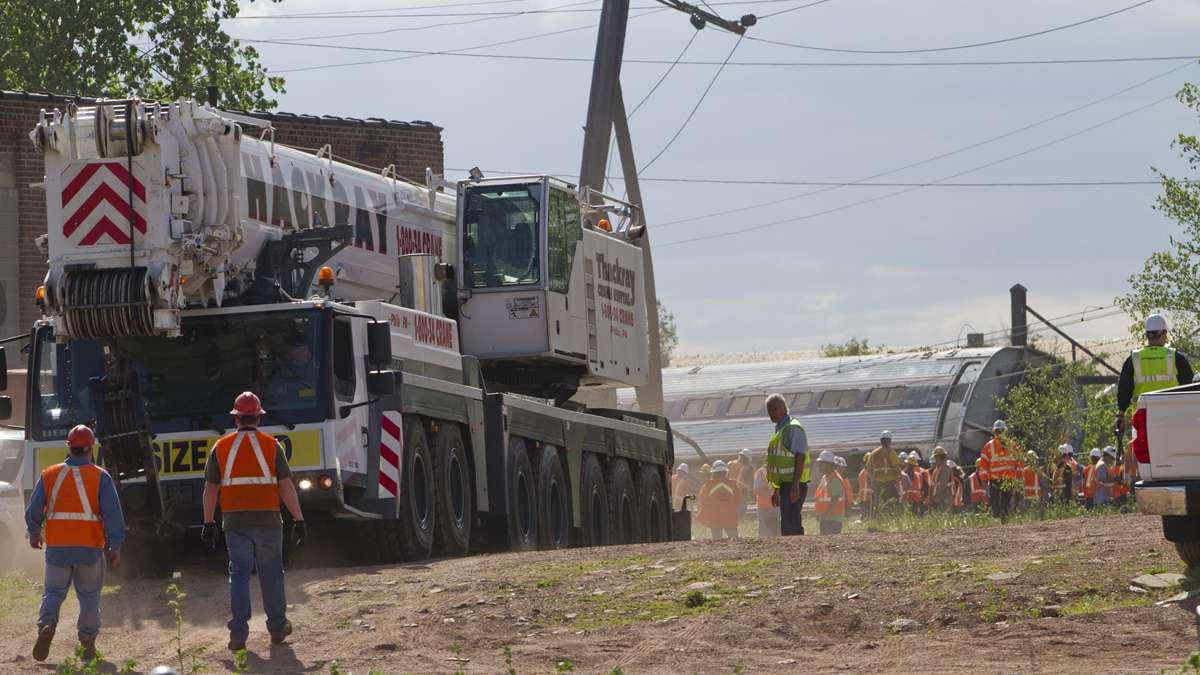Forthcoming train safety system might have prevented Amtrak 188 tragedy

With the National Transportation Safety Board’s Robert Sumwalt confirming earlier reports that Amtrak 188 was travelling over 106 miles per hour, the evidence suggests that the cause of last night’s deadly derailment was gross overspeed. Amtrak’s speed limit for the stretch of track leading into the curve where the train derailed is just 50 miles per hour.
The tragedy of this derailment is compounded by the thought that something could – and actually was – being done to prevent just this sort of accident. At the time of the accident, Amtrak was in the process of implementing a new train safety system aimed at preventing accidents caused by human error and excess speed.
Mechanical failure could have played a role in the derailment, and it is still too early to speculate on what caused the New York-bound train to jump the tracks near Frankford, as NTSB’s Sumwalt noted during a press conference this afternoon. Still, Sumwalt said that the train was heading 106 miles per hour as it approached the curve, when the train’s engineer applied full-force, emergency brakes. About three seconds later, the train was still goin 102 miles per hour as it derailed.*
But if human error – namely, the failure of the engineer to properly mind the train’s speed – played a role, then Positive Train Control (PTC) could have saved Amtrak 188. NTSB’s Sumwalt confirmed that this stretch of track did not have PTC installed at the time of the accident.
“PTC, in general, would have stopped the over speeding,” said Jeffery Knueppel, Deputy General Manager for SEPTA, in a conference call to reporters earlier in the day. SEPTA operates its regional rail services in part on tracks owned by Amtrak, including Amtrak-owned tracks where the derailment occurred.
After the deadly Metrolink accident outside Los Angeles in 2008 that killed 17, Congress passed the Rail Safety Improvement Act, requiring all heavy rail commuter lines and freight rail lines sharing track with commuter trains to implement PTC by December 31, 2015.
PTC works by allowing computer systems to pinpoint the location and speed of a train and then automatically stop a train that was going too fast or was approaching a stopped or slow train ahead of it too quickly.
Under Amtrak’s existing Automatic Train Control system in use during last night’s accident, such automatic speed “enforcement” is unavailable except along stretches of tracks where limits are very low, such as entering or exiting a station.
Everywhere else along the line, it’s up to the engineer to know the speed limits and react to track signals, which operate much like regular car traffic signals. The idea behind PTC is to provide an automatic stopgap in cases where the human engineer was distracted, missed signals, or was otherwise unable to respond.
NOT SOON ENOUGH
As PlanPhilly reported earlier this year, Amtrak, SEPTA and Metrolink were the only three train operators out of 41 on pace to meet the deadline. Still, it may be that progress was still coming tragically too late for those onboard Amtrak 188.
SEPTA and Amtrak officials were planning to hold a conference call today to discuss the status of installing PTC infrastructure in and around Philadelphia. Because the two transit operators share tracks (SEPTA rents from Amtrak), and both reacted quickly to the congressional mandate, progress seemed to be humming along.
On the conference call, SEPTA’s Knueppel said he still expects the regional transit authority to meet the December 31, 2015 deadline, but admitted that “if we hit some tough hurdles, we could miss it.” Still, he emphasized that implementation would happen to a “significant” amount of SEPTA’s lines by the end of the year.
Amtrak and SEPTA were both installing a system called Advanced Civil Speed Enforcement System (ACSES), which combined with the existing Automatic Train Control system, would provide PTC. ACSES would allow civil track speed enforcement – automatic braking by the on-board computer – as well as temporary speed restrictions (for work zones or other concerns). Amtrak is responsible for installing ACSES on the lines it owns, including those used by SEPTA or freight rail operators.
Amtrak had already installed PTC along other lines. According to the February edition of Amtrak’s employee magazine, ASCES is operational along the “New England Line from Boston to New Haven, Connecticut; the New York Line from New Brunswick to Trenton, New Jersey; and the Mid-Atlantic Line from Perryville, Maryland to Wilmington.”
Notably absent from those lines is the remainder of the Northeast Corridor, including the stretch of track with the most passengers: between Philadelphia and New York.* It’s unclear how Amtrak decided to prioritize PTC implementation.
Amtrak officials were unavailable to comment for this article.
While PTC helps trains communicate with one another and the track’s signal system, miscommunications and other human errors only account for about 35 percent of train crashes, which are exceedingly rare to begin with. For example, PTC wouldn’t have prevented either of oil train derailments in Philadelphia over the past two years – both were caused by track defects. And PTC wouldn’t have stopped the commuter train in Valhalla, New York from colliding with an SUV stuck on the tracks.
But, at this point, it’s looking more likely that this horrific accident could have been prevented. Tragically, being on time just wasn’t enough.
*This article has been updated to include information provided at the NTSB press briefing, which confirmed it’s earlier reports.
**The top city pair by ridership is New York – Washington, which necessarily includes Philadelphia to New York. Philadelphia – New York is the third highest city pair, behind Boston – New York.
WHYY is your source for fact-based, in-depth journalism and information. As a nonprofit organization, we rely on financial support from readers like you. Please give today.






